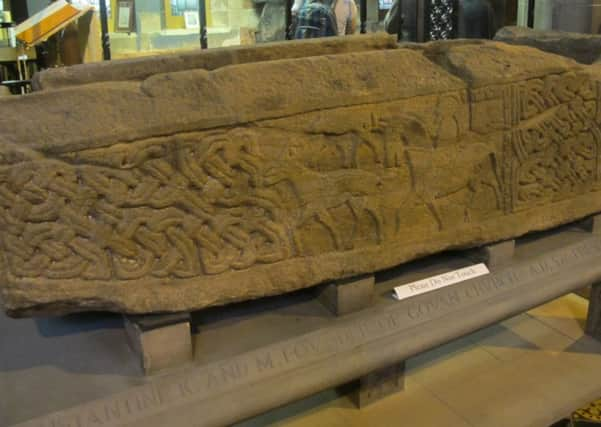Was Abington the scene of a Royal assasination?


A recently-published book on Scotland’s ancient history certainly suggests this, revealing that what is now a fairly sleepy corner of the Upperward was once a hotbed of political intrigue and could have been the scene of the “revenge killing” of one of the kings of the various tribal nations that held sway over what we call the Strathclyde area today.
The author of the book on that part of our land in the Dark Ages, historian Tim Clarkson, is the first to admit that identifying the scene of this murder as Abington is a wee bit speculative.
Advertisement
Hide AdAdvertisement
Hide AdHaving said that, an awful LOT of the mediaeval history is educated guesswork; the very name ‘Dark Ages’ indicates it was a period when very little, if anything, of current events were properly recorded for posterity.
So, let’s look at what evidence there is in this ancient murder case.
What Tim states seems fairly certain, according to records by mediaeval chroniclers, is that, in the year 971 AD, one of our ‘regional’ rulers, a King Cuilen, was slain by Strathclyde Britons.
The motive behind the murder is also thought to be known, that being revenge for Cuilen’s kidnapping and raping of one of the Briton’s princesses.
Advertisement
Hide AdAdvertisement
Hide AdWe think we know the identity of the murderer, the princess’s vengeful father, Prince Rhydderch.
But where exactly was the murder scene? The author sets out the clues available. The location of Cuilen’s death is given in ancient documents as either ‘Ybandonia’ or ‘Loinas’, two mysterious place-names that cannot be found on any modern map.
However, in the 19th century, the famed Celtic scholar W.F. Skene wondered if Ybandonia might be Abington in Clydesdale.
Later, the place-name expert William Watson referred to a mediaeval poem which relates that Cuilen was killed in a ‘foreign land’.
Advertisement
Hide AdAdvertisement
Hide AdThat might seem to knock the Abington theory on the head – but hold hard.
Watson also noted that Abington was part of the “Kingdom of Strathclyde”, an independent realm in the 10th century, which WOULD be ‘foreign’ territory to a Scottish king like Cuilen whose own lands lay further north.
The book by Tim Clarkson looks further into the identity of Ybandonia and comes to the conclusion that it could very well be today’s Abington.
He cites in evidence for this another ancient record, this time from, of all places, the deepest south of England and centres on the mediaeval writers’ habit of ‘Latinising’ common British placenames of the age.
Advertisement
Hide AdAdvertisement
Hide AdHe explains: “In this mediaeval document, the Oxfordshire town of Abingdon is called ‘Abbendonia’.
“The author of this document, writing in Latin, turned ‘Abingdon’ into a Latin-sounding name by simply adding ‘ia’ on the end.
“I wonder if something similar may have happened in Abington which, like Abingdon, has a name of Anglo-Saxon origin bestowed by English settlers in the Dark Ages.
“Perhaps a Scottish chronicler, writing about the death of King Cuilen, coined the name ‘Ybandonia’ because it was more Latin-sounding than ‘Abington’? If Ybandonia is the correct location and if it really is Abington, then the slaying of a villainous Dark Age king can be added to South Lanarkshire’s early history.”
You can read more about this mystery and many others from our area’s deep, dark past in Tim Clarkson’s book ‘Strathclyde and the Anglo-Saxons in the Viking Age’, published by John Donald.